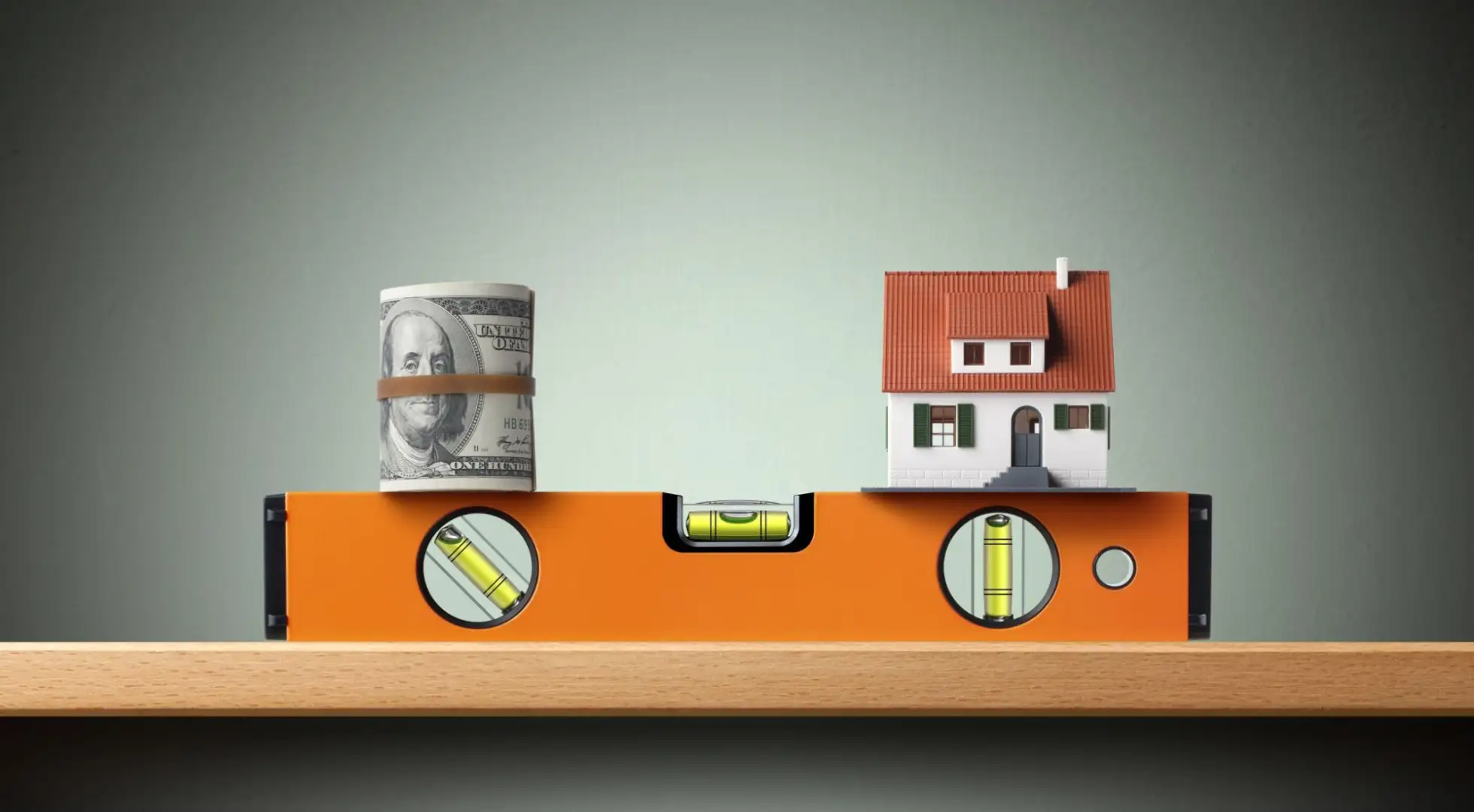Conventional Construction Loans: A Complete Guide

Conventional construction loans are a widely accessible option for building a new home. You can use these mortgages to fund construction on land you already own or include the cost of purchasing property.
Searching for the perfect place to live? Building a house from the ground up gives you the flexibility to customize your home the way that you want it, but funding new construction is different than taking out a standard mortgage. Thankfully, conventional construction loans are designed to make the process as simple as possible.
How a Conventional Construction Loan Works
Conventional construction loans are residential mortgages that let you build a brand-new home from the ground up. With a construction loan, you can fund:
The purchase of land to build on (if needed)
Hard costs such as materials and labor
Soft costs like appraisal and permitting fees
Other customary expenses, including contingency and required financial reserves
In short, you can use a conventional construction loan to finance nearly every facet of building your new home.
Unlike a traditional mortgage, these loans do not provide all of the funds upfront at closing. Instead, payments are released in stages — referred to as draws — as different phases of work are completed and approved by an inspector or property appraiser.
Another difference between a standard mortgage and a conventional construction loan is the repayment length. While most mortgages have a term of up to 30 years, construction loans are typically limited to one year or less.
However, there are options that allow you to obtain both short-term construction financing and a long-term conventional loan with a single mortgage closing.
Types of Conventional Construction Loans
There are several types of conventional construction loans. We'll review the most common types of new construction financing and touch on an option to fund improvements to an existing property.
Construction-to-Permanent Loan
A single-close construction-to-permanent loan is the simplest financing option for most borrowers. This type of conventional mortgage allows you to obtain one loan that covers the cost of buying land (if needed) and financing construction. The loan then automatically converts into a permanent long-term mortgage once work is finished.
Since conventional construction-to-permanent loans require just one closing, you are only responsible for paying a single set of closing costs. This single close can save between 2% and 4% of the total amount financed for most borrowers.

“Single-close construction loans offer significant advantages by combining the construction and permanent financing into one seamless transaction, eliminating the need to pay for two separate closings and qualify twice. Not only does this save borrowers thousands in closing costs, but it also locks in their permanent interest rate from the start, protecting them from potential rate increases during the construction period.”
In many cases, however, your final interest rate with a construction-to-permanent loan may be slightly higher than with a two-close transaction to account for the lender’s added risk.
In addition to conventional single-close construction mortgages, you can also obtain construction-to-permanent loans insured by government agencies such as the FHA, VA, and USDA. In most locales, however, these government-backed alternatives are more difficult to find as fewer lenders offer them compared to conventional financing.
Construction-Only Loans
Construction-only loans are short-term financing designed to cover the cost of building a home, including purchasing a site to build on if needed. In most cases, construction-only loans have a term of up to one year.
Unlike construction-to-permanent loans, these mortgages do not automatically convert into long-term financing once work is complete. Instead, a construction-only loan must be paid off in full by the end of its term, most typically by refinancing into another mortgage.
While traditional mortgages require you to make monthly principal and interest payments, construction-only loans generally come with interest-only payments that are due on the draws that have been funded up until that point. This interest-only structure is similar to the initial construction phase of single-close loans.
Although construction-only loans are more commonplace than construction-to-permanent financing, they require you to requalify for a new loan to satisfy the debt, which ultimately means paying two sets of closing costs. This could pose a problem for applicants who see a drastic change to their finances or credit score between the start and end of construction.
Owner-Builder Construction Loan
If you are a licensed and experienced builder or general contractor looking to finance construction that you plan to oversee yourself, you will want to apply for an owner-builder construction loan.
While many mortgage companies offer these loans, they can be harder to find than standard conventional construction loans, as lenders generally prefer work be carried out by an independent third party.
End Loan
An end loan is a conventional mortgage for a recently completed new home. If you're financing your build with a construction-only loan, the end loan will be the permanent mortgage you refinance into.
Since construction is complete and the mortgage is secured by a finished property, end loans often have slightly more favorable rates than a single-close construction-to-permanent mortgage. As we mentioned with construction-only financing, the downside is that you must requalify for the final mortgage and will be responsible for paying a second set of closing costs.
Renovation Loan
Renovation loans allow you to rehabilitate or make improvements to an existing residence while financing the work based on the home's as-completed value. These mortgages can be used to purchase and renovate property you’re buying or refinance and improve a house you already own.
Conventional renovation loans include Fannie Mae’s HomeStyle Renovation and Freddie Mac’s CHOICERenovation. Government-backed options include the FHA 203(k), as well as renovation loans insured by the USDA and VA for eligible properties and borrowers.
Eligibility Requirements
Conventional construction loan requirements are not all that different from the requirements for a standard conventional mortgage.
Lending guidelines require you to have a:
Minimum credit score of 620
Debt-to-income ratio of 50% or lower
Down payment of 5% or greater
Private mortgage insurance policy for builds with less than 20% down
Detailed plan for construction, including a signed contract with a qualified builder
Two-year history of stable income and employment
Recent credit history free from major adverse events such as bankruptcy and foreclosure
Source of funds to cover closing costs, which typically run between 2% and 4% of your total loan
Keep in mind, however, that these are just the baseline conventional construction loan requirements. Many lenders may impose their own more stringent eligibility standards, such as a credit score of 680 or higher or a down payment equal to 20%.
Conventional vs Government-Backed Construction Loans
While government-backed construction loans are available through the FHA, VA, and USDA, few lenders offer these mortgages. In some areas, borrowers may be unable to find a mortgage provider willing to fund these types of loans.
This is typically due to lower consumer demand and greater restrictions placed on the loans by the government agencies insuring them.
However, when government-backed construction mortgages are available, they often have lower eligibility and down payment requirements. This makes them a good option for borrowers who may not qualify under stricter conventional lending standards. Government-backed mortgages, including construction financing, also generally come with lower interest rates.
Conventional construction loans, on the other hand, are more widely available and can greatly simplify the building process. The downside, however, is that conventional lenders will often require applicants to have a higher credit score and more cash set aside for their down payment.
Construction Loan Rates
As we briefly touched on earlier, conventional construction loan rates are often higher than a traditional mortgage for an already-built property. This is true of both construction-only and construction-to-permanent financing.
The reason is that mortgages are secured by the home that is being financed. If a borrower stops making their payments, the lender can foreclose on the property and liquidate it to recover a substantial portion of their investment.
However, when building a new home, the lender takes on greater risk as they're less likely to recoup their funds by selling an empty lot or partially completed residence.
As such, applicants can expect to pay slightly higher interest rates on conventional construction loans to offset this added uncertainty.
How to Get a Conventional Construction Loan
How exactly do you go about getting a conventional construction loan? The process shares many similarities with the process for obtaining a regular mortgage, although there are some unique steps that you will need to be aware of. Here's what you should expect from start to finish.
1. Get Preapproved for a Mortgage
The first step in obtaining a conventional construction loan is getting preapproved through a mortgage lender who offers these types of loans in your area. Preapproval involves undergoing a credit check and submitting some basic financial documentation like paystubs and tax forms. In return, your lender will conditionally agree to loan you up to a certain amount to fund your build.
2. Select a Property to Build On
With lender preapproval in place, the next thing you'll need to do is select a property to build on. This can be land you plan to purchase – with the cost built into your new loan – or a lot you already own. If using property you currently hold title to, your existing equity can satisfy some or all of the required down payment.
3. Sign a Contract With a Qualified Builder
From here, you’ll need to sign a contract with a qualified local builder and obtain detailed plans for the construction of your proposed home. In some cases, particularly if you’re shopping for a lot and waiting to find the perfect space to build on, you may want to begin talking with local builders and work out some of the essential details to save time once you have a property under contract.
Unsure how to find a qualified builder in your area? One great resource is your local chapter of the National Association of Home Builders.
4. Undergo the Loan Underwriting Process
Once you've selected a property and have an agreement signed with your builder, your lender will put your application through the full loan underwriting process. During this stage, underwriters will take a closer look at every aspect of your mortgage application and building plans. This process usually takes between four and six weeks, depending on the lender’s current processing time and application load.
5. Close on the Mortgage and Begin Construction
Once your lender has successfully underwritten your loan, you will be given a date for closing where you’ll finalize all of the paperwork, take ownership of your lot (if purchasing one), and get the ball rolling on the actual construction process.
6. Follow Up on Progress With Your Builder and Lender
After work has begun, your builder and lender will remain in contact to ensure that progress is being made according to schedule and that funds are being released as milestones in the construction are completed.
While you won't need to worry about the technical side of the draws, it's wise to maintain regular contact with both parties to ensure that everyone is in communication and no problems have arisen.
7. Obtain a Certificate of Occupancy on Your Completed Home
After your builder has completed their work according to your construction plans, a final inspection will be requested in order to certify the work and obtain a certificate of occupancy for your home. With this in place, your new property will be move-in ready.
8. Refinance or Convert Your Loan Into a Permanent Mortgage
At this point, you will need to obtain a permanent mortgage that acts as long-term financing. If you applied for a single-close construction-to-permanent loan, there’s little else to do. Once your certificate of occupancy has been issued, your lender will automatically convert your mortgage per the agreed-upon terms.
If you took out construction-only financing, however, you will need to apply for an end loan, which involves undergoing the preapproval and loan underwriting process again.
Is a Conventional Construction Loan Your Best Bet?
Due to the difficulty in finding lenders who offer government-backed construction financing, many borrowers rely on conventional construction loans to fund their building costs. Whether you opt for a construction-only or construction-to-permanent loan, conventional financing is far easier to obtain for the majority of appropriately qualified applicants.
If you're ready to begin the construction loan preapproval process, reach out and apply with a local lender who can go over your best-suited construction financing options.









